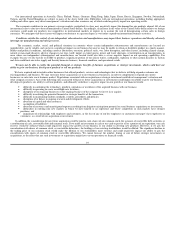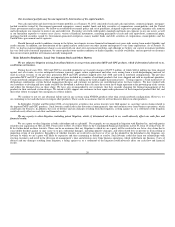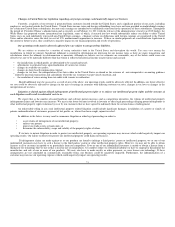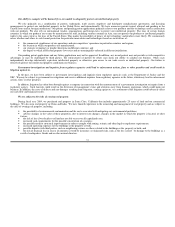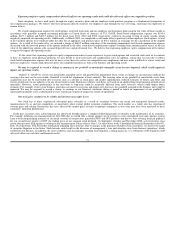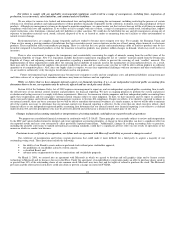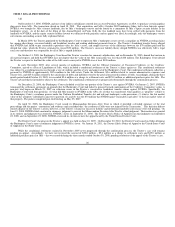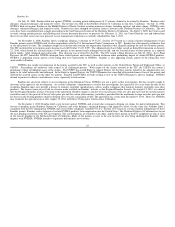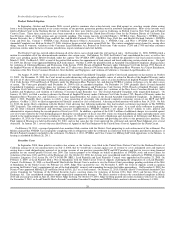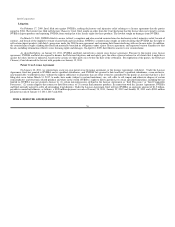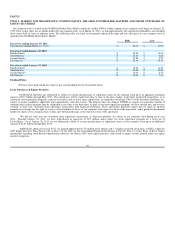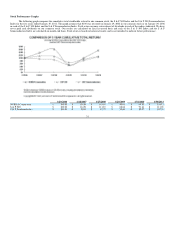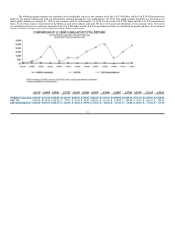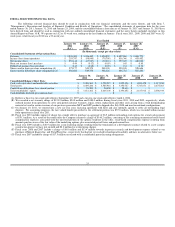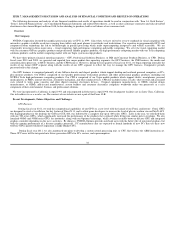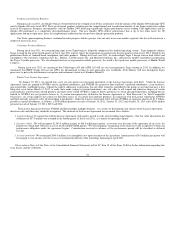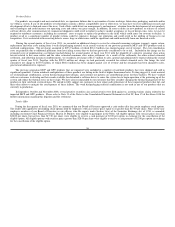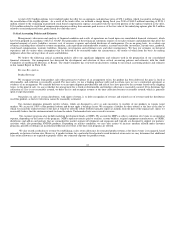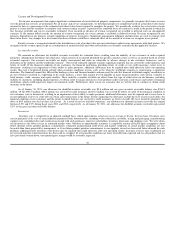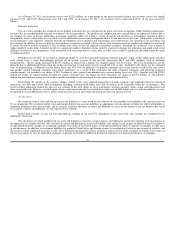NVIDIA 2011 Annual Report Download - page 31
Download and view the complete annual report
Please find page 31 of the 2011 NVIDIA annual report below. You can navigate through the pages in the report by either clicking on the pages listed below, or by using the keyword search tool below to find specific information within the annual report.
Intel Corporation
Litigation
On February 17, 2009, Intel filed suit against NVIDIA, seeking declaratory and injunctive relief relating to a license agreement that the parties
signed in 2004. The lawsuit was filed in Delaware Chancery Court. Intel sought an order from the Court declaring that the license does not extend to certain
NVIDIA chipset products and enjoining NVIDIA from stating that it has license rights for these products. The lawsuit sought no damages from NVIDIA.
On March 23, 2009, NVIDIA filed its answer to Intel’s complaint and also asserted counterclaims for declaratory relief, injunctive relief, breach of
contract, and breach of the implied covenant of good faith and fair dealing. NVIDIA’s counterclaims sought an order declaring that NVIDIA has the right to
sell certain chipset products with Intel’s processors under the 2004 license agreement, and enjoining Intel from interfering with our license rights. In addition,
the counterclaims sought a finding that Intel had materially breached its obligations under a prior license agreement, and requested various remedies for that
breach, including termination of Intel’s cross licensing rights and damages. On April 16, 2009, Intel filed its answer to our counterclaims.
As described below, on January 10, 2011, NVIDIA and Intel entered into a patent cross license agreement. Pursuant to this patent cross license
agreement, NVIDIA and Intel also agreed to dismiss the Delaware litigation, and each party gave the other a general release for all claims that it might have
against the other, known or unknown, based on the actions of either party on or before the date of the settlement. By stipulation of the parties, the Delaware
Chancery Court dismissed the lawsuit with prejudice on January 12, 2011.
Patent Cross License Agreement
On January 10, 2011, we entered into a new six-year patent cross licensing agreement, or the License Agreement, with Intel. Under the License
Agreement, Intel has granted to NVIDIA and its qualified subsidiaries, and NVIDIA has granted to Intel and Intel’s qualified subsidiaries, a non-exclusive,
non-transferable, worldwide license, without the right to sublicense to all patents that are either owned or controlled by the parties at any time that have a first
filing date on or before March 31, 2017, to make, have made (subject to certain limitations), use, sell, offer to sell, import and otherwise dispose of certain
semiconductor- and electronic-related products anywhere in the world. NVIDIA’s rights to Intel’s patents have certain specified limitations, including but not
limited to, NVIDIA was not granted a license to: (1) certain microprocessors, defined in the License Agreement as “Intel Processors” or “Intel Compatible
Processors;” (2) certain chipsets that connect to Intel Processors; or (3) certain flash memory products. In connection with the License Agreement, NVIDIA
and Intel mutually agreed to settle all outstanding legal disputes. Under the License Agreement, Intel will pay NVIDIA an aggregate amount of $1.5 billion,
payable in annual installments, as follows: a $300 million payment on each of January 18, 2011, January 13, 2012 and January 15, 2013 and a $200 million
payment on each of January 15, 2014, 2015 and 2016.
ITEM 4. REMOVED AND RESERVED
29


